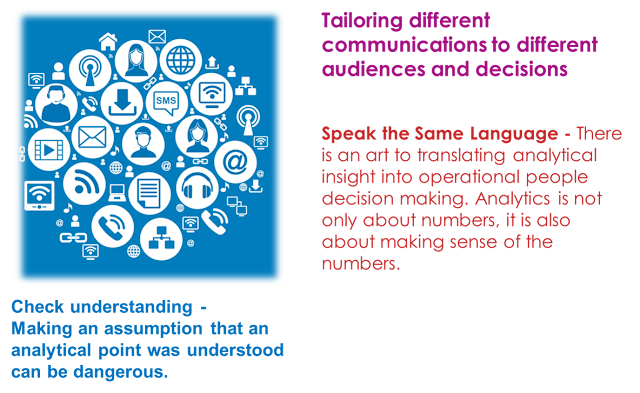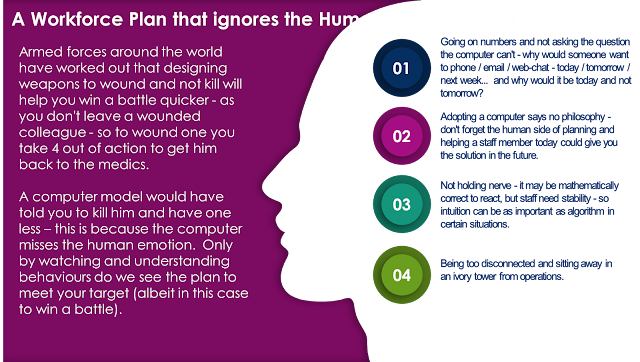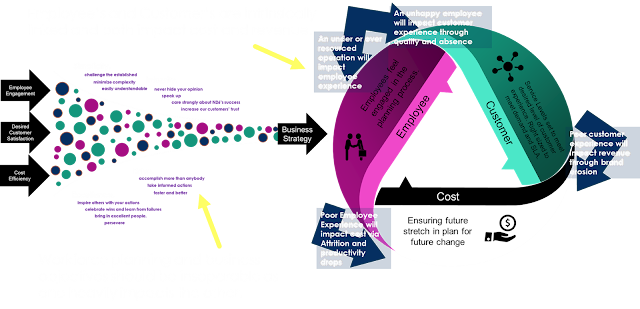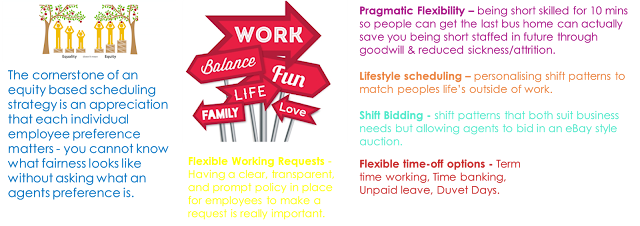I was recently asked to present on this subject. This was actually one of the hardest questions I have ever been asked to answer, because it was like asking…
“tell us about all the mistakes you have made and experienced in your WFM career to date”
Believe me I could come up with triple figures for this list, so narrowing it down to my top 5… difficult.
Here are my top 5
Forgetting that the 1st rule of forecasting is that all forecasts are WRONG
Not adopting a Communicate, Communicate, Communicate strategy with clear prioritization and expectations set.
A Workforce Plan that ignores the Human side at its peril.
Not balancing WFM outcomes or aligning them to business strategy.
Driving productivity at the cost of employee engagement.
Forgetting that the 1st rule of forecasting is that all forecasts are WRONG
Workforce Planning teams often fall into the trap of selling or letting people think that forecasts are absolutes when the dictionary definition says they are no more than an estimate.
Uncertain forecasts should lead to ensuring you have in place alternative plans you can enact with agility.
To mitigate this deploy What-IF modelling to inform risk and decision making.
Prepare contingency plans ahead of time – so what?
Empowers the Real-Time Team / and Operations to act.
Removes the ‘what are we doing about this?’ question.
Increases the response time for remedial action.
Not adopting a Communicate, Communicate, Communicate strategy with clear prioritisation and expectations set.
A Workforce Management team is rarely not busy and its analytical insight has far reaching impacts on workforce decision making. Thus it is doubly important to engage and work with stakeholders to prioritise workforce planning output and set clear expectations on what is achievable and by when. A lack of clear expectations not only undermines workforce planning performance, but also impacts negatively on engagement, relationships and teamwork.
A Workforce Plan that ignores the Human side at its peril
Good Workforce Management considers human behaviour – software and the new wave of automation software mathematically and financially makes sense because they can reduce planning workload and speed up the process, but this just makes EQ and Empathy as skills in a workforce management team that much more important. –
Check out this link on my thoughts on #empathy
Not balancing WFM outcomes or aligning them to business strategy.
Driving Productivity at the cost of Employee Engagement
Great customer experience starts with great employee engagement …at every level… Driving productivity is vital for any business but when you’re workforce management strategy is driving short term efficiency at the cost of employee engagement you rapidly lose productivity through higher employee turnover and absentee rates.
Click here to read more about Equity vs Equality Scheduling











Responses